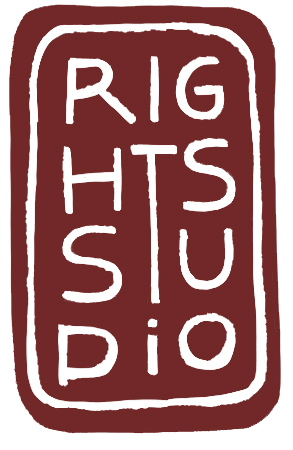The Rights Studio is a new creative hub for people and organisations to engage on rights issues affecting children, young people and future generations through the arts and other creative expressions.
We are in the pursuit of insight and clarity. We seek reflection and understanding, and to get there we go back to our roots, we seek wisdom, we draw inspiration from nature, indigenous cultures, and world philosophies.
Our current initiatives involve residencies, a festival, a yearly magazine and a series of touring exhibitions and collaborations with creatives and organisations. We also keep an illustrated journal that we share on a weekly basis through our newsletter.
Questions
While we describe ourselves as a new creative hub, The Rights Studio is, in fact, an invitation. An invitation into a new way of thinking and doing, one which begins with questioning everything we take for granted. In particular, how we contribute – or think we contribute – to a better world. We will not have all the answers, but we want to ask better questions.
We don’t want to add to the noise and antagonism that we see permeating so many spaces and want this to be a space for new thinking and new conversations. In doing so we seek to approach rights and art by questioning current approaches to these fields and questioning them on themselves. We aspire to perfect the art of questioning and to learn to live the questions. You can read more about our love for questions in our illustrated journal.
Why Rights?
As a studio born at the Children’s Rights International Network, our thinking departs from children’s rights but extends to all rights in general. Children’s rights are human rights, and human rights are unattainable if we are unable to protect our planet, this is as simple as it should be. However, it’s rarely understood or advocated in this way, at least not consistently.
When it comes to children, the overwhelming approach is one of pity or charity. Likewise, when we think of human rights, we often forget that a healthy planet is a precondition to the enjoyment of our rights: the environmental and climate crisis that all life on this planet is facing poses a big threat to human rights, as human life is inextricably linked to the health of our planet.
Our departure from children’s rights is a way to point to the urgency and immediacy of actions that are required by society; children are humans today, with human rights today. But it is also a way to connect with our ancestors and with future generations so that our actions are grounded in work done before us and build foundations for those who will come next.
Advocating for children’s rights is not just for children and their families, it’s not just for lawyers or NGOs or people who make the policy – it’s the foundation of an open, free and collaborative society that is conscious of its dependence on a healthy planet.
Why Art?
Art has its roots in real life.
Metaphor and poetic figures as allegories are normally used in a very specific context unrelated to science. Always inviting other perspectives and perceptions married with a poetic sense of the world. Our intention here is to bring this artistic language into a science-social context, helping to open new communication roads. Art is a way of sensing the world which escapes classification, an emotional process that can complement the objectiveness that seems to govern society.
Art, in any form, can be understood as another kind of knowledge that needs and respects the freedom of the individual, the imagination and the capacity of creation; that is, the premises for criticism. The latter being the one that opens the door to nonconformity, this is where any hope of radical change lies.
Our aspiration, therefore, is to run the Rights Studio as an art form in and of itself. This means working artfully, not just producing or creating art through various means but approaching our work and mission as a social enterprise as if it was an art form: asking questions, being critical, daring to imagine, and to break the rules when necessary, and practicing all these over and over. It takes skill to make art, and it takes skill to make things right. You can read more about the role of art in our work in our Journal article The Function of Art. We also believe art is key to helping us move away from An Imagination Crisis.
